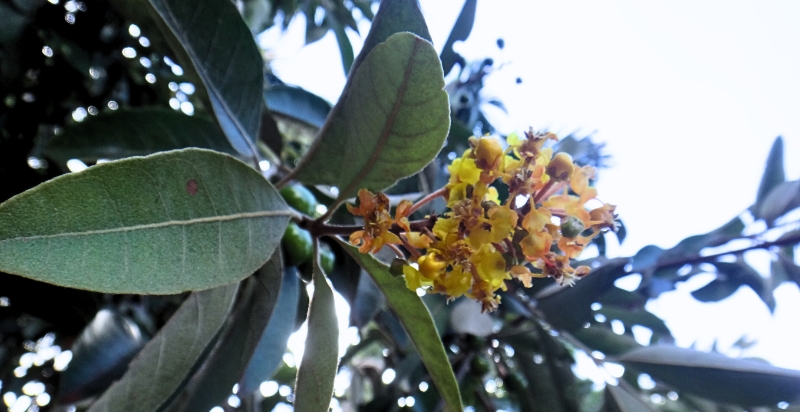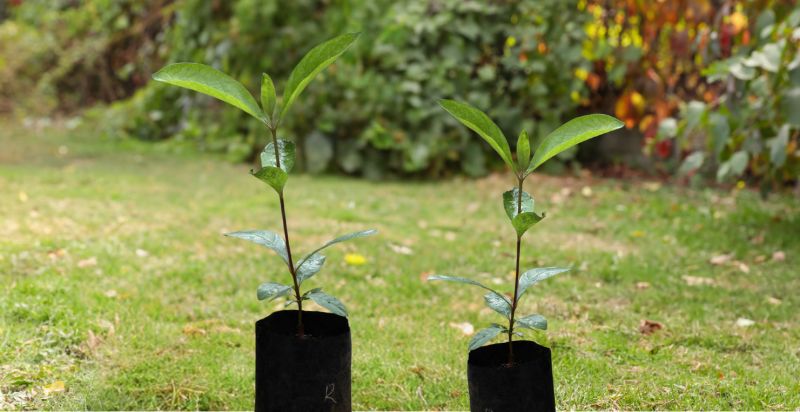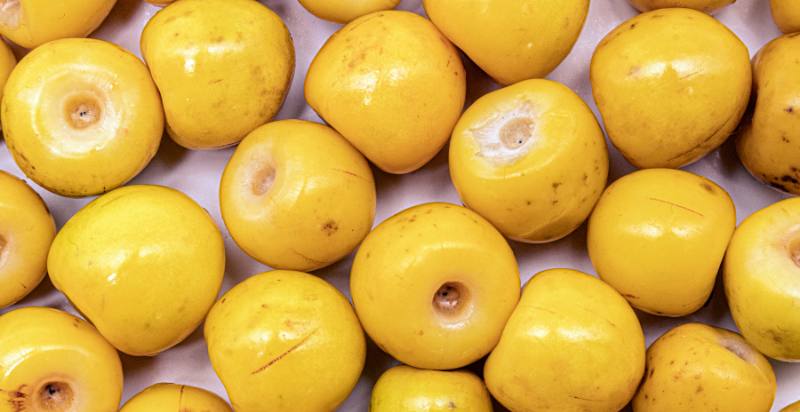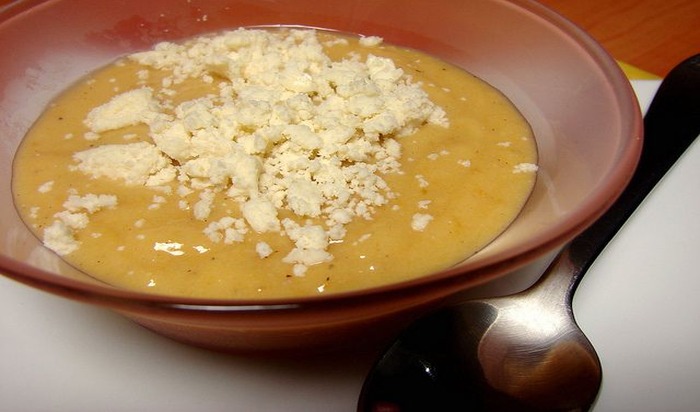The Nance Fruit, scientifically named Byrsonima crassifolia, a tropical delight that dots the landscapes of Central and South America, covering from Rica to Peru. This small, radiant yellow fruit, with its intriguing blend of sweet and sour flavors reminiscent of grapefruit or lime, charms the senses. Measuring a mere 1 to 2 centimeters in diameter, its round or oval silhouette echoes the familiar shape of a cherry, while its golden, creamy pulp offers a versatile culinary charm, often adorning salads and various dishes.
The right way to pronounce it by English speakers, it could be pronounced as “nance” with a soft “a” sound. In this detailed excursion, discover the essence of tropical dinning as we inquire to the appeal of the Nance fruit.
Key Takeaways:
- The trees that bear nance fruit can be found in tropical deciduous forests and Amazonian savannas.
- While nance fruits are primarily consumed in their native growing regions, they have expanded to the Caribbean and some parts of Southern California.
- Nance fruits are incredibly versatile and can be enjoyed in various culinary preparations. Whether you prefer sweet or savory dishes, nance fruit adds a unique and tropical twist to your recipes.
- This small tropical fruit is packed with fiber, calcium, magnesium, vitamin C, potassium, vitamin E, copper, iron, folate, and vitamin K.
Why are Nance Fruits so Popular?
Nance fruits have gained popularity for their unique odor and flavor, making them a sought-after ingredient in many modern culinary delicacies. The nutritional benefits of nance fruit are also noteworthy, as it has been in used in traditional remedies, dishes, and beverages for ages.

Origin of the Nance Fruit:
The Nance Fruit is native to Central and South American countries and regions of Mexico; They, flourish in tropical and subtropical climates, such as Brazil, Costa Rica and Panama. The Trees that bear nance fruit can be found in tropical deciduous forests and Amazonian savannas. But its exact origin is uncertain. It has been around for centuries, with records of the fruit being grown in Costa Rica as far back as 1756.
The Nance Fruit was introduced to Europe in the 19th century and is now cultivated throughout many countries in Central America, as well as in the Caribbean and the United States. The Historical significance of The Nance fruit holds a special place in the history of the Mayan culture, as it is prominently featured in the ancient Mayan myth known as the Popol Vuh. According to the myth, the demon Vucub-Caquix transforms into a bird and perches on the nance fruit trees, devouring the delicious fruits.
What are the Different Names of Nance Fruit?
Nance fruit is known by different names around the world. The names are Golden Spoon, Yellow Cherry, Chaparro, Nanche, Mariaco, Yaca, Cimun, Mirixis, Changunga, Yoco, Kraabu, Hogberry, Peraleja, Craboo, Nancites, Cao Cimun, Maurissi, Manchic, Murici, Indano, Savanna Serrette, Mantecos, Manzi, and Nauche, as well as numerous indigenous monikers specific to different regions of the Americas.
What are the Various Varieties of Nance Fruit?
There are two primary types of Nance fruits: a yellow-orange variety and a red variety called Red Nance (Malpighia mexicana) or Guajacote. Both types are considered similar and used in similar preparations. The red variety is commonly found in Mexico and Costa Rica. Nance fruits are seasonal and regarded as exotic fruits.
History Behind Nance Fruit:
The Nance fruit is important in Mayan culture, especially in a story from the ancient Mayan book, the Popol Vuh. In this story, a demon named Vucub-Caquix turns into a bird and eats Nance’s fruits from the trees. Two Mayan gods, Hunahpu and Xbalanque, fight and defeat this demon, bringing peace back to the world. After their victory, they turn into the sun and moon, showing the win of good over evil. This story highlights how special the Nance fruit is in Mayan history and beliefs.
Why Nance Fruit Standout From Cherries?
Nance fruit looks similar in shape to cherries,but the resemblance ends there, It’s golden or yellow-orange and has a white, oily inside. It tastes unique, sometimes sweet and sometimes sour. Inside, there’s a big seed with two or three smaller seeds.

Where are Nance fruits Grown and Harvested?
Nance fruits thrive in tropical to sub-tropical climates and are typically found in tropical delicious forests and Amazonian Savannahs (growing up to 1800 m in height). Although these fruits primarily grow in the wild within their native region, they can also be successfully cultivated in home gardens and pastures. The trees produce small yellow fruits hanging from the branches, usually ripening throughout summer. Nance Fruits can be harvested by hand or with a ladder. Once picked, they should be stored at room temperature to prevent spoilage.
The Seasonal Availability of Nance Fruit:
| Region | Season |
The Caribbean | Spring through early summer (April – June) |
| South America | Spring through early summer (April – June) |
Central America | Spring through early summer (April – June) |
| Mexico | Spring through early summer (April – June) |
| Southern California | Spring through early summer (April – June) |
| United States and other regions | Canned nance fruits available |

How Long Does it Take for a Nance Tree to Bear Fruit?
A nance tree can start producing fruit anywhere from 3–5 years after planting. Nance trees grow best in warm, tropical climates with abundant sunlight and well-drained soil. They are relatively low-maintenance and drought-tolerant, but they prefer consistently moist soil and regular watering. Nance fruits are available in the spring through early summer, with a peak season from April to June. Each tree produces around 2,000 to 4,000 fruits in a season.
How to Grow and Pick Nance Fruit?
The Nance tree is known for its ability to grow in containers, making it adaptable to various environments. This tree is drought resistant and thrives during the summer and fall harvest seasons. Although it requires full sun, it can also tolerate a little shade. Nance trees prefer sandy and rocky soils and can produce fruit without cross-pollination, as they are self-pollinating. They have a fast growth rate and propagate from seeds, making them suitable for medium- or large-sized pots. With proper care, these trees can start bearing fruit within 2–3 years.
Nance fruits are usually picked when fully ripe, as they have the best flavor. The fruit should be firm and slightly yellow-orange. It should also feel heavy for its size. Avoid picking fruits that are too soft or bruised, as these will not have the same flavor or texture.
How to Identify The Ripeness of Nance Fruit?
| Significance | Ripe Nance Fruit | Overripe Nance Fruit |
| Color | Bright shade of yellow | Brown spots |
| Firmness | Slight give when pressed | Very soft or mushy |
| Smell | Intense floral and cheesy aroma | No distinct aroma or off-putting smell |
| Bruising | Absence of brown spots or bruising | Brown spots or visible bruising |
Nutritional Benefits of Nance Fruit:
Nance fruits are rich in vitamins C and B-6 and dietary fiber, which promote a healthy digestive system and offer various other advantages. Additionally, Nance Fruit is a low-calorie, low-fat, low-cholesterol, and low-sodium option, making it ideal for weight management. Furthermore, it contains antioxidants that boost the immune system. It is advisable to consult a medical practitioner before incorporating Nance fruit into your medication routine, especially if you are already taking vitamin C supplements.
Let’s Take a Closer look at the Nutritional Value of Nance Fruit:
| Nutrient | Amount per 100g |
| Fiber | 2.7g |
| Vitamin C | 20mg |
| Magnesium | 18mg |
| Calcium | 23mg |
| Potassium | 209mg |
| Vitamin E | 0.29mg |
| Copper | 0.1mg |
| Iron | 0.43mg |
| Vitamin K | 0.5μg |
| Folate | 3μg |
Health Benefits of Nance Fruit:
Fiber is really important for keeping our digestive system running smoothly and keeping our gut healthy. Calcium and magnesium are great for making our bones strong and also help in keeping our blood pressure in check. Vitamin C boosts our immune system, helping us fight off illnesses, while vitamin E is a superhero that protects our cells from damage. Copper helps build the tissues that connect different parts of our body, and iron is crucial for transporting oxygen to our cells, keeping us energized. Folate and vitamin K are also key players in keeping our body functioning well.
Nance Fruit Precautions and Side Effects:
Allergic Reactions:
If you have an allergy to acerola cherries, it’s possible that you could also be allergic to nanches since they belong to the same family. It’s important to consult with your healthcare provider if you’re unsure about potential allergies to ensure your health and well-being.
Pregnancy and Breastfeeding:
There’s no definite information about this, it’s important to consider with your doctor before you decide to change your diet.
Drug Interaction:
There is’nt much information about how nanches might interact with other medicines. if you’re under medication its better to take consideration from your doctor.
Flavor Profile of the Nance Fruit:
The Nance Fruit exhibits a delightful combination of sweetness and sourness, similar to a grapefruit. It has a mild tartness that complements its sweetness perfectly. The fruit has a firm yet slightly chewy texture, making it an excellent choice for salads and garnishing dishes. The nance fruit is characterized by its oily, aqueous, and pulpy flesh, which varies in color from white to pale yellow.
This fruit is notable for its distinctive and potent aroma, which combines elements of floral and fruity fragrances with sweet undertones alongside a unique cheesy scent. “The aroma of ripe nance fruit is absolutely captivating. It’s a delightful fusion of floral and fruity scents, with an underlying hint of cheesiness that adds to its unique character,” says Maria Rodriguez, a fruit enthusiast.
Where to Find the Best Quality Nance Fruit?
The finest quality Nance Fruit can be obtained from local sources where they are grown. Due to their limited shelf life, it is recommended to consume them immediately after harvesting. Alternatively, they can be stored in water, fermented, or frozen for extended use. Fresh Nance Fruit can also be purchased from markets or online. If you are in the United States, check with your local grocery stores or specialty shops.
How to Store Nance Fruit?
Nance Fruits should be stored at room temperature. It is best to keep them in a cool, dark place and away from direct sunlight. Once picked, they can last up to a few weeks if stored correctly. They can also be frozen for longer-term storage, but the taste and texture may be affected. The study on nance fruits revealed that ripening affects color, sweetness, and nutrient content, with a decrease in antioxidants and carotenoids. Harvesting at the transient stage and storing at 15°C significantly extends shelf life beyond 15 days, preserving quality and bioactive compounds. Total soluble solids were identified as a key indicator for optimal harvest timing, offering a practical guideline for maximizing fruit quality and shelf life.
Ways to Use Nance Fruits in Everyday Life:
Nance Fruit can be utilized in a myriad of recipes. It serves as a delightful garnish for salads and various dishes and can be incorporated into both sweet and savory preparations. The fruit can be enjoyed on its own, in smoothies, or used as an ingredient in homemade jams. It has a relatively thin flesh, containing 1 to 3 brown-black inedible seeds. Nance fruits can be consumed raw or cooked, offering a subtly sweet and sour acidic taste.
- Sliced into Salads: Add a burst of tropical flavor to your salads by slicing nance fruits and tossing them with your greens. The sweet and slightly tangy taste of nance fruit complements fresh vegetables beautifully.
- Pesada de Nance: In Panama, nance fruits are commonly used to make pesada de Nance, a rich and creamy dessert. This dessert is made by cooking nance fruit with water, sugar, fruits, and cornstarch to achieve a luscious consistency.
This is a traditional recipe that uses the pulp from tart nance fruits, water, cornstarch, and sugar. It is a smooth cream that can be served hot or cold with crumbly and salty fresh cheese on top.
Preparation Time
15 minutes
Cooking Time
12 minutes
Ingredients
- 8 cups of nance
- 3 liters of water
- ¾ cup of water
- 1 cup of cornstarch
- Optional: 1 lime/a handful of pineapple chunks
Process
- Add the nance to a blender and pour water till it covers the top of the fruit.
- Blend for 5 to 10 seconds. Do it quickly so you do not break or blend the seeds.
- Sieve the puree through a colander, pressing gently with your hands to get all the creamy pulp and leave the seeds behind. Add a little water if required to get all of the juice out.
- Taste the pulpy juice you have collected. If it tastes bland, squeeze in some lime or add some sieved pineapple puree.
- Pour the juice into a pot and set it over medium-high heat.
- Add sugar and cornstarch and the remaining water (if any).
- Keep stirring for 7 to 12 minutes or until it thickens up to a consistency that you like.
- Serve it hot with feta, cottage cheese, or queso Blanco. If you want it cool, chill it in the fridge.

- Blended into Frozen Treats: Freeze nance fruits and blend them with other tropical fruits to create refreshing popsicles, sorbets, or homemade ice cream. The creamy texture and delightful flavor of nance fruit will transport you to a tropical paradise.
- Smoothies and Juices: Blend nance fruits with other tropical fruits, yogurt, and a splash of juice to create a refreshing and nutrient-packed smoothie. You can also juice nance fruits to make a flavorful and invigorating drink.
- In Stews or Rice Dishes: Add nance fruits to savory stews for a touch of sweetness and acidity. They can also be included in rice dishes to enhance the complexity of flavors and add a vibrant twist.
When it comes to desserts, Nance fruits add a delightful taste to ice cream and sorbet. You can add them to savory dishes such as curries and stews. Furthermore, they can be served hot or cold, topped with fresh cheeses, milk, or corn. Regardless of how you use them, Nance Fruits will surely add a unique flavor to your meal.
Conclusion:
Nance Fruit, an exotic and delicious fruit, serves as an excellent source of vitamins C, B-6, and dietary fiber, supporting a healthy digestive system. Boasting a sweet and sour flavor with a firm but slightly chewy texture, it is a fantastic addition to salads and various dishes.
For those eager to enjoy this unique fruit, fresh Nance Fruits can be found in markets or purchased online. Remember to store them at room temperature for optimal results. Explore and savor the exceptional taste of Nance Fruit in a wide range of sweet and savory recipes!
Frequently Asked Questions (FAQs):
Can Dogs Eat Nance Fruit?
While there is no known toxicity in the flesh of Nance fruit for dogs, it is essential to note that the fruit’s seeds can pose serious health risks. The seeds present a choking hazard and, if ingested in large quantities, can obstruct a dog’s intestines, blocking the passage of liquids and digested food.
What is Nance Fruit in English?
Nance fruit is a sweet, round, pitted fruit that looks like a cherry but delivers a unique taste and strong odor. It’s also known by many other names, including nanche or hogberry.
Can I Eat Nance Fruit While Pregnant?
Yes, Nance may be beneficial during pregnancy as it contains manganese, folate, dietary fiber, and Vitamins A, E, and K.
Is Nance a Cherry?
The tropical nance fruit looks a bit like a cherry but bears a strong odor and unique flavor. Its thin flesh is typically golden and encases a creamy white pulp. Eat raw or cooked; nance fruit can be added to smoothies, desserts, or even savory dishes.
How do you Grow Nance Fruit?
Nanche trees grow best in warm, tropical climates with abundant sunlight and well-drained soil. They are relatively low-maintenance and drought-tolerant; but do prefer consistently moist soil and regular watering.
- Fuerte Avocado: History, Flavor, Calories, Benefits, And Uses - March 27, 2024
- Everything You Wanted to Know About Barhi Dates - March 23, 2024
- Everything You Wanted To Know About Beech Mushrooms - March 23, 2024

20 thoughts on “Nance Fruit: Nutrition, Benefits, And Uses”
Comments are closed.